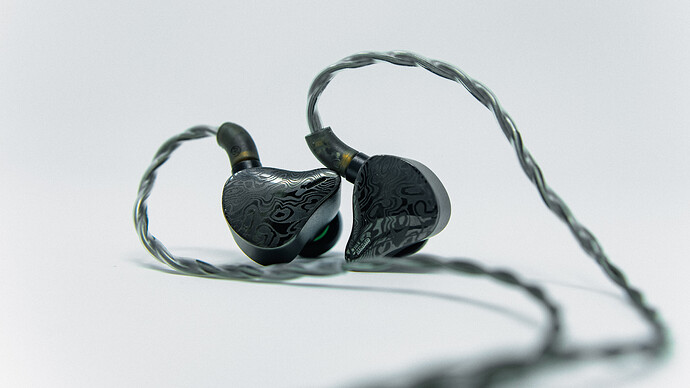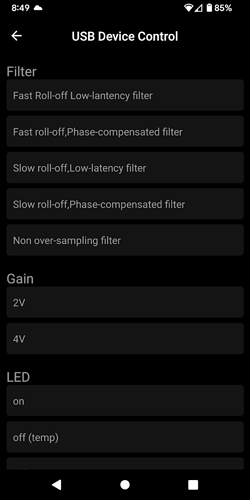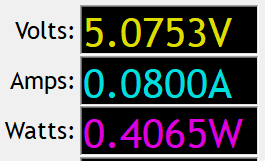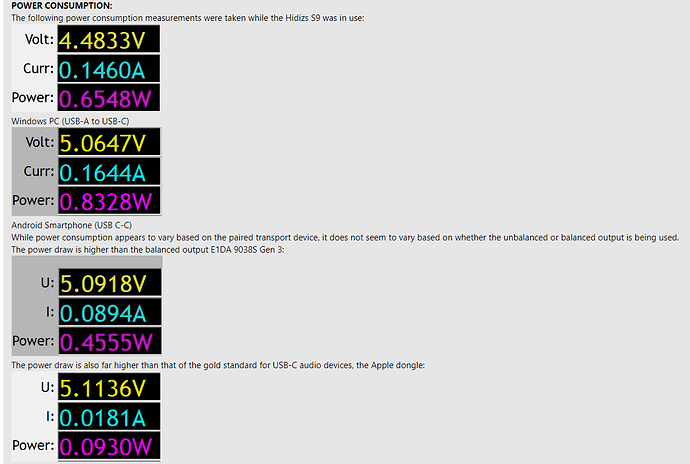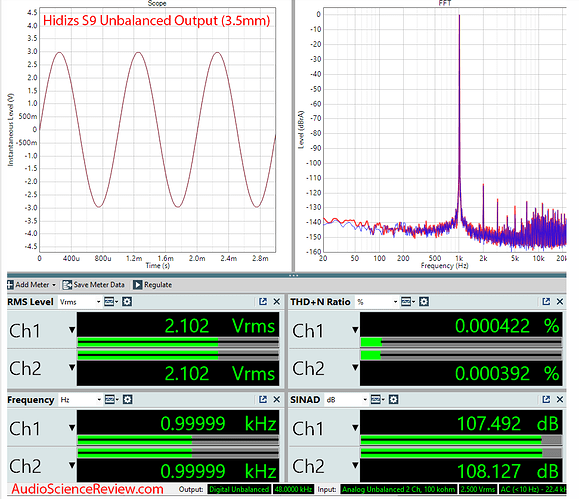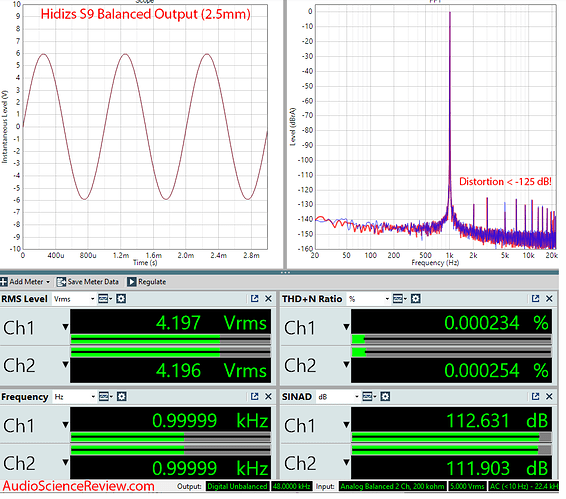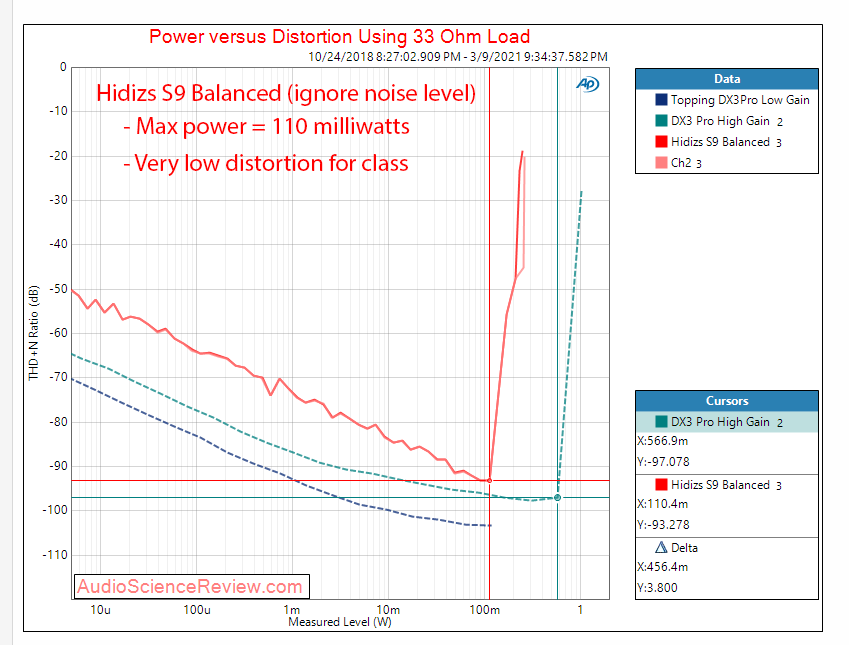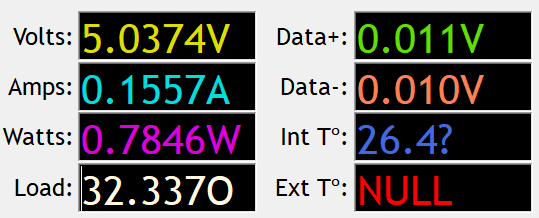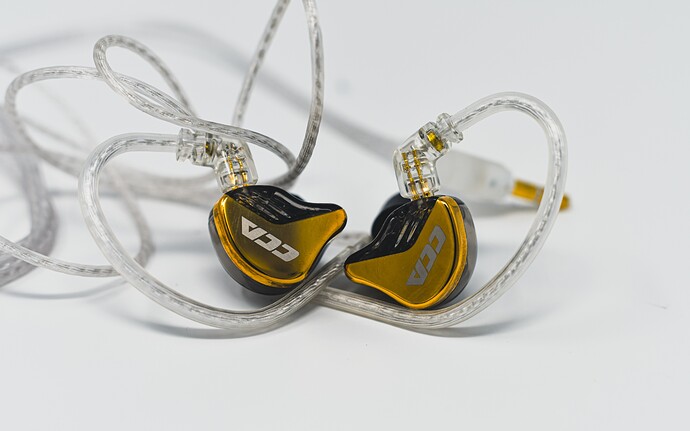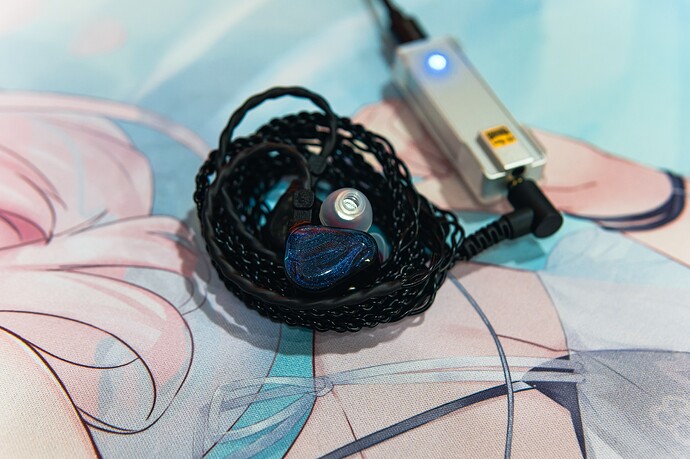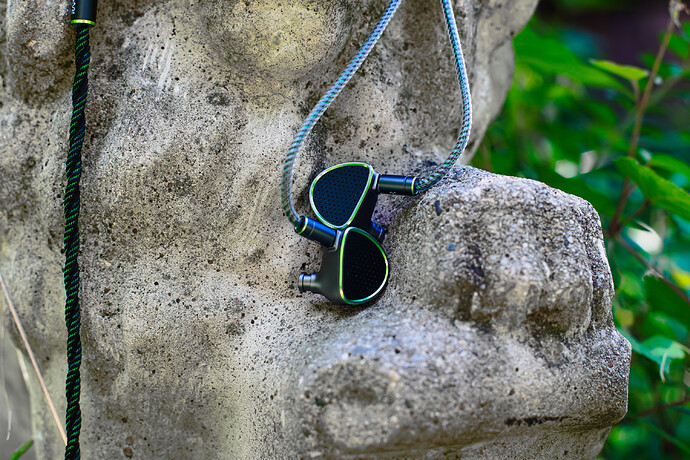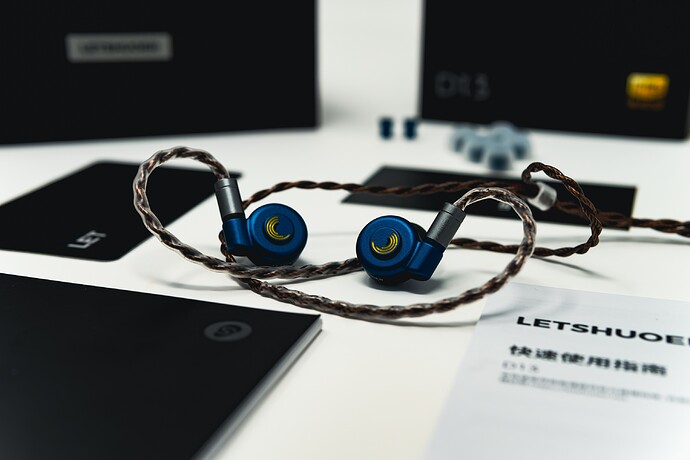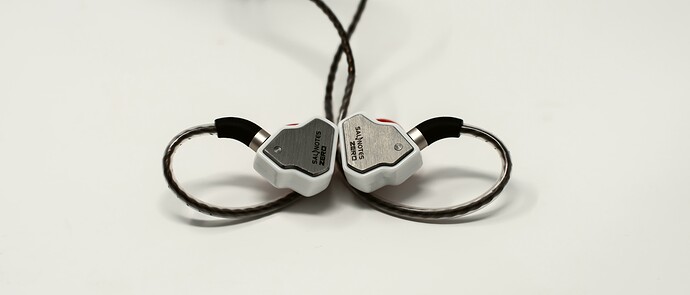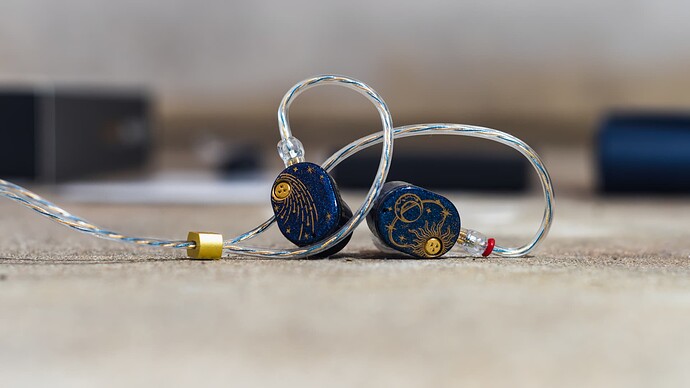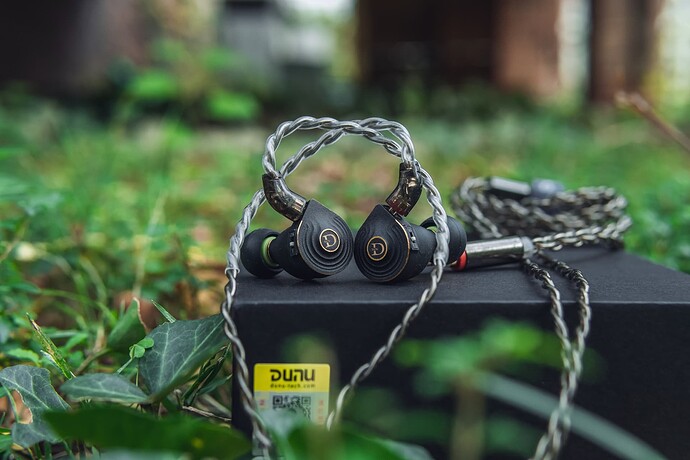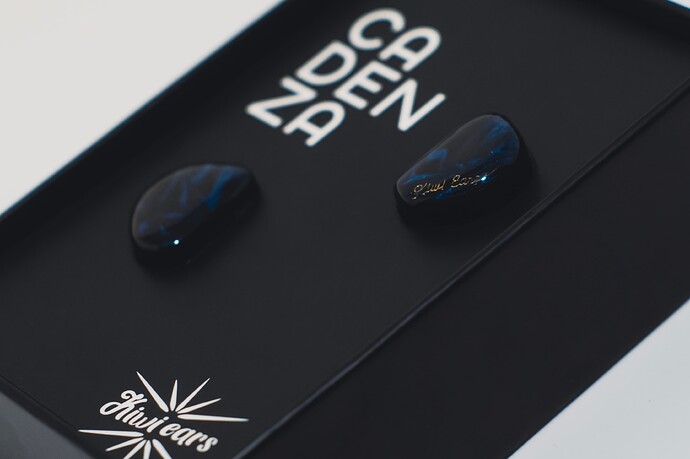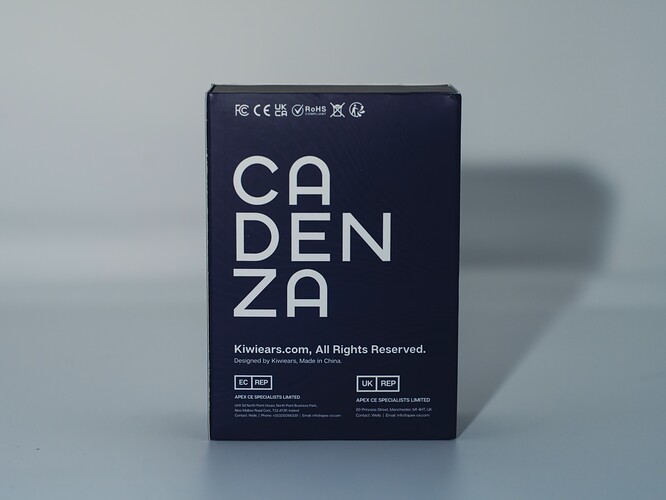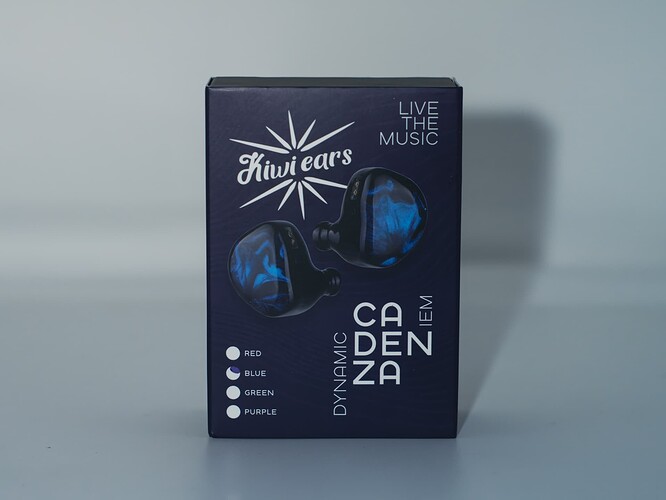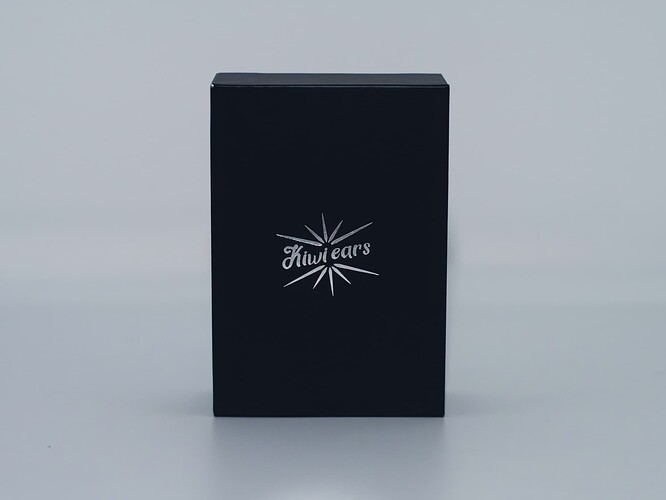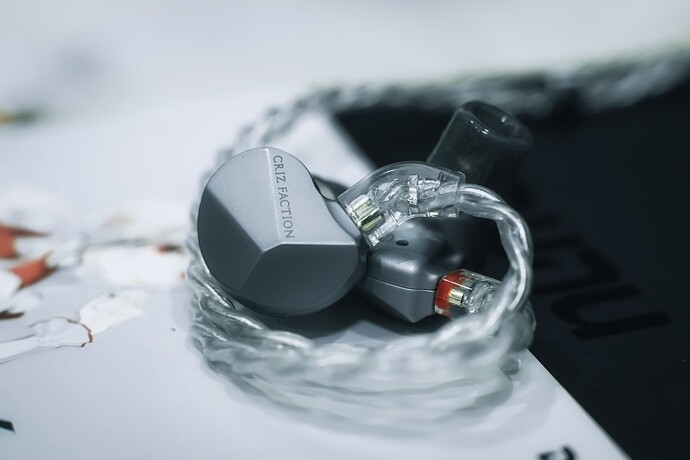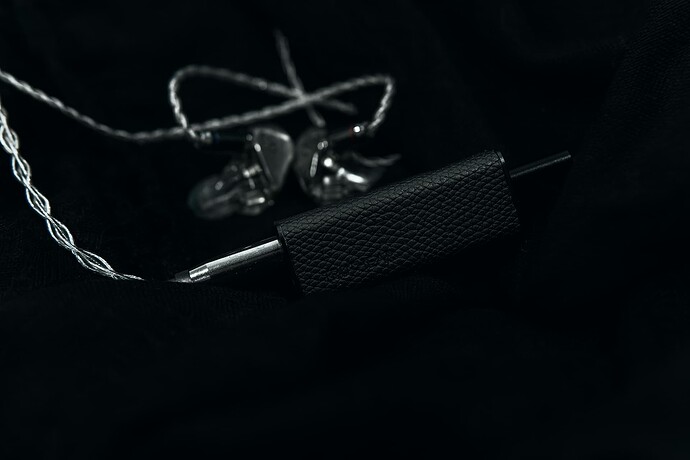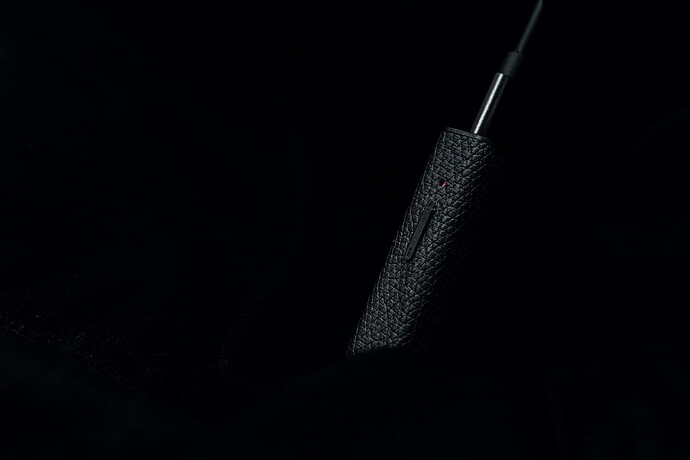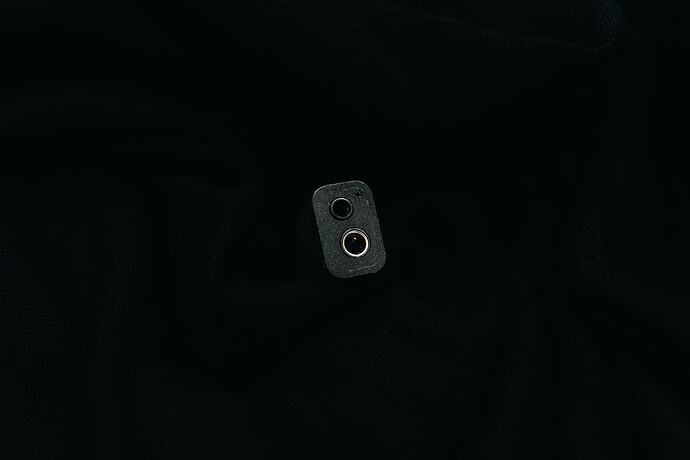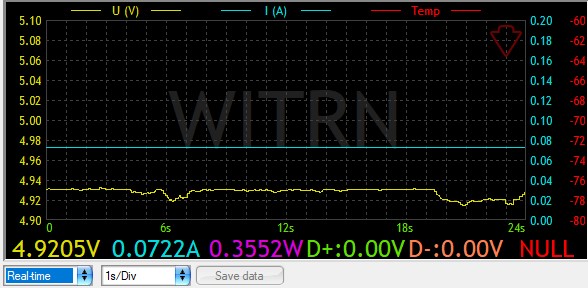INTRODUCTION AND DISCLAIMER:
The Dunu Vulkan is an in-ear monitor (IEM) which uses a hybrid (2 dynamic drivers + 4 balanced armatures) driver configuration. Dunu sent me the Vulkan in exchange for my evaluation. The Vulkan retails for $379.99.
SOURCES:
I used the Dunu Vulkan with the following sources:
- Qudelix 5K
- Hidizs S9
- Moondrop Dawn
PACKAGING AND ACCESSORIES:
The Dunu Vulkan comes in a rectangular black box with a black slipcover. A magnet secures the lid of the box. One foam mounting tray holds the IEM and modular MMCX cable, and a second holds the swappable cable terminations and a plastic storage container for two of the three sets of eartips (2S, 2M, 2L in total). The cable uses Dunu’s Q-Lock PLUS swappable termination system. A small box contains the third set of eartips (S, M, L), which are squatter with a wider nozzle than the first two sets. Also inside the box are an airplane adapter, a cleaning brush, a 3.5mm to 1/4" jack adapter, a microfiber cleaning cloth with Dunu branding, and a small booklet featuring instructions for Dunu’s cable system in Chinese.
The level of attention to detail in the unboxing experience is impressive. Dunu consistently provides packaging that befits the price tag of its products. However, I continue to hope that Dunu will include at least one set of foam eartips in future products rather than the borderline redundant amount of silicone eartips they often include with their IEMs.
BUILD QUALITY AND DESIGN:
The Dunu Vulkan has black anodized metal housings with metal faceplates. The faceplates have a mixed matte and reflective finish which is reminiscent of Damascus steel knives. There is a thin vertical mesh-covered vent centered along the bottom tip of the faceplate, and a pinprick vent in the center of the inside of the shell housing. On the left earpiece, “DUNU, ESTABLISHED 2003” is etched above the vent, while “VULKAN, DK-X6 HYBRID” is etched on the right earpiece. Each earpiece also has a directional indicator. The nozzles have metal mesh filters and lips to secure eartips.
The included MMCX cable uses a quad-braid pattern below the Y-split and a double-helix pattern above the Y-split. The cable uses gunmetal grey There is strain relief above the 3.5mm jack but none at the Y-split. The cable has pre-formed earguides. There is a chin-adjustment choker. The 3.5mm jack and the Y-split use metal hardware. There are raised “L” and “R” markings on each 2-pin connector.
COMFORT, FIT, AND ISOLATION:
The Dunu Vulkan should be worn cable-up. I found the Vulkan very comfortable. Secureness of fit is tip-dependent. I had the best luck with the short and wide set of included silicone eartips. I found secureness of fit with large-sized Moondrop Spring tips lacking. Isolation is above average. The Vulkan does not have driver flex.
MEASUREMENTS:
You can find measurements of the Dunu Vulkan on my expanding squig.link database:
Squiglink — IEM frequency response database by Bedrock Reviews
SOUND:
The Dunu Vulkan is a neutralish sounding headphone with a moderate sub-bass boost and a substantial lower-treble boost.
Sub-bass extension is excellent. There is a fair amount of impact to percussion, but I found myself craving a more intense sub-bass boost than what the Vulkan has out of the box. Bass texture is quite good, as is the speed of bass articulation. Bass resolution is fair. There is enough mid-bass to provide body and warmth, but not so much that the bass overshadows or muddies the midrange.
The Vulkan’s midrange favors vocals over instrumentation. Vocal intelligibility is excellent, and the Vulkan renders harsher male vocals with both grit and power. There are moments when both male and female vocals stray into sibilance, though female vocals are more at risk of this. While vocals are most prominent, midrange instrumentation is well-represented as well. Distorted and downtuned electric guitars have a satisfying growl without coming across as underemphasized or overdriven. Organic percussion is crisp-sounding with excellent timbre. The level of presence is appropriate, but as with the bass region, internal resolution and midrange detail retrieval are average.
As mentioned before, there is a pointed elevation in the lower treble region. This did not pose a problem for most of my listening with the exception of certain electronic music tracks. Still, I cannot help but feel the lower treble emphasis is intended to compensate for the middling detail retrieval elsewhere in the Vulkan’s frequency response. Upper treble extension is excellent, and the soundstage is both wide and tall. Instrument separation is very good, while imaging is just good. Treble transient delivery is slightly hazy.
SOURCE PAIRING:
The Dunu Vulkan is surprisingly easy to drive. I did not notice hiss with any of my sources.
CLOSING WORDS:
I have reviewed a significant number of IEMs at the sub-$100 price point, and a fair number of IEMs retailing for $700 and up. The $400 price bracket is new territory for me, so my value judgment of the Dunu Vulkan is at best an educated guess. With that said, if I were making my first jump up from budget territory and had $400 blowing a hole in my pocket, I would be quite happy putting it towards the Dunu Vulkan.
